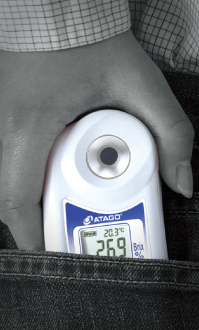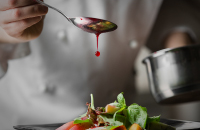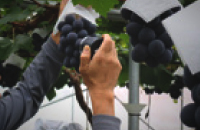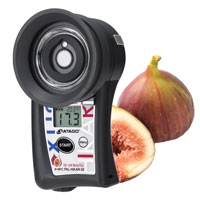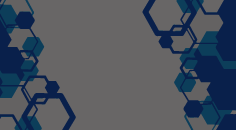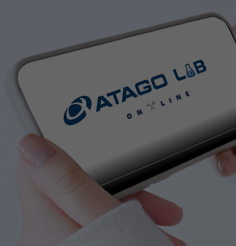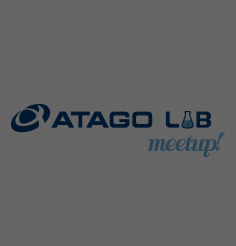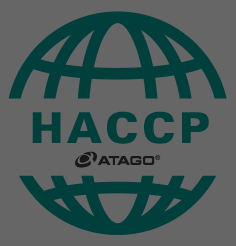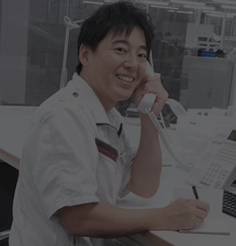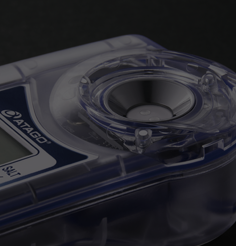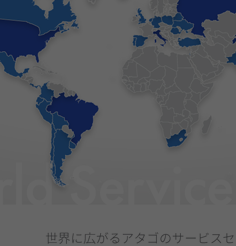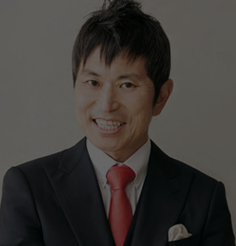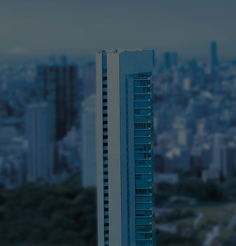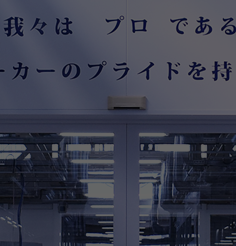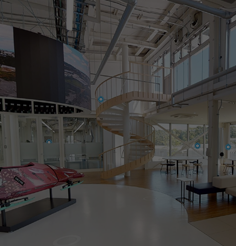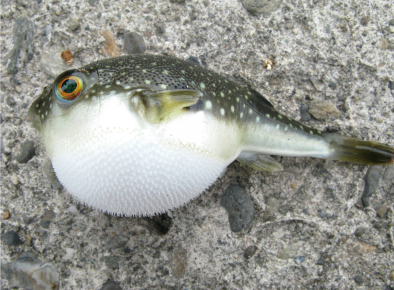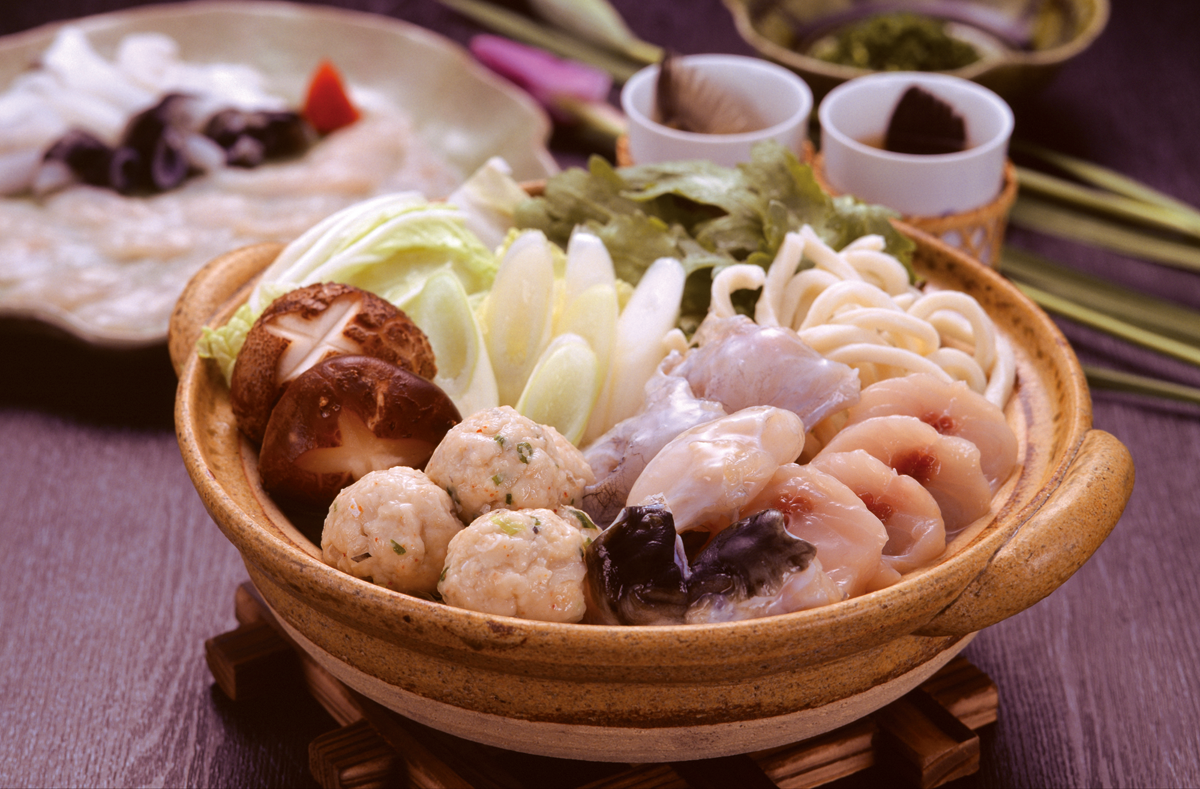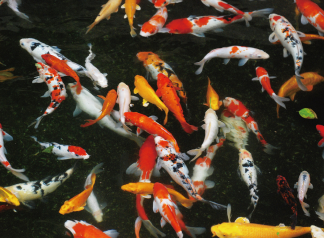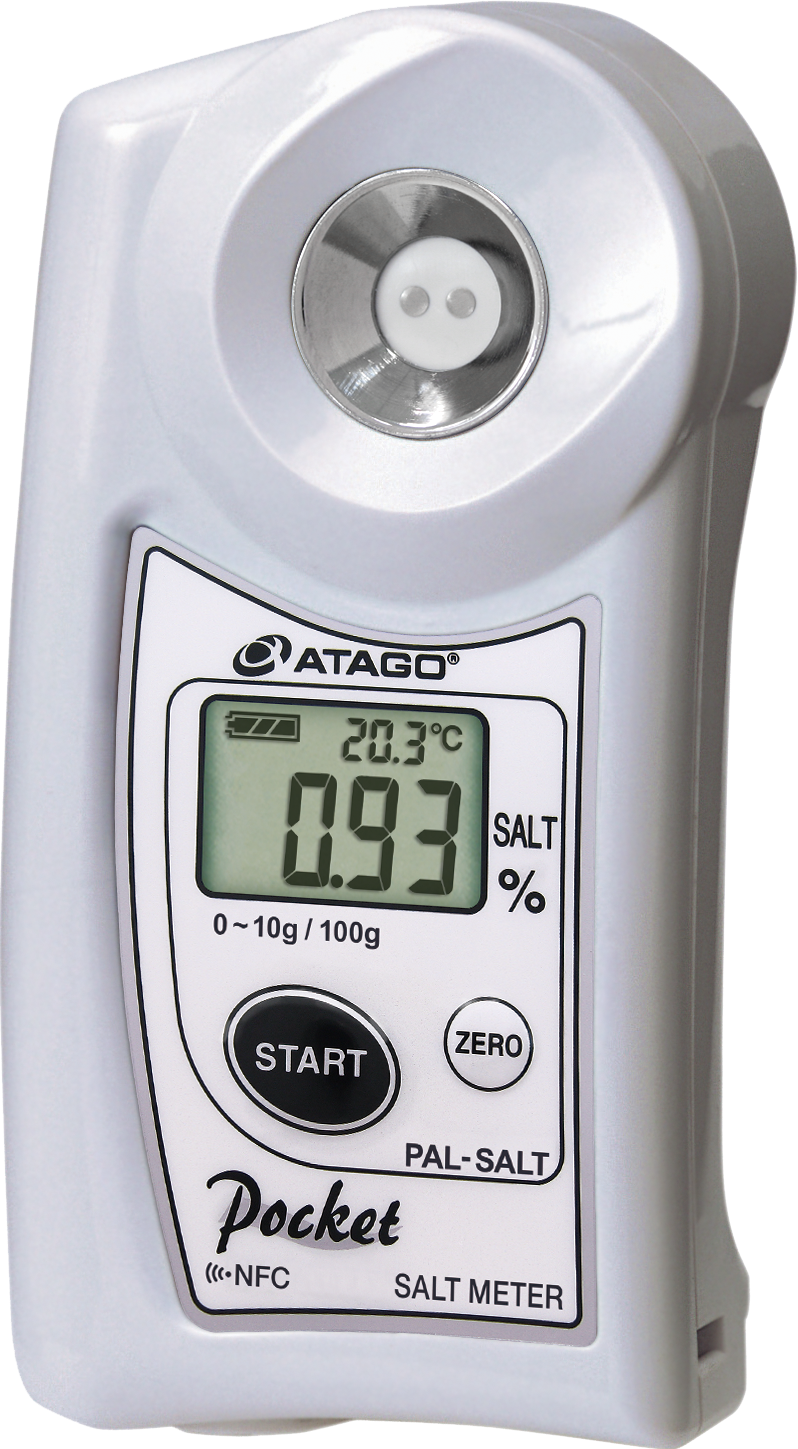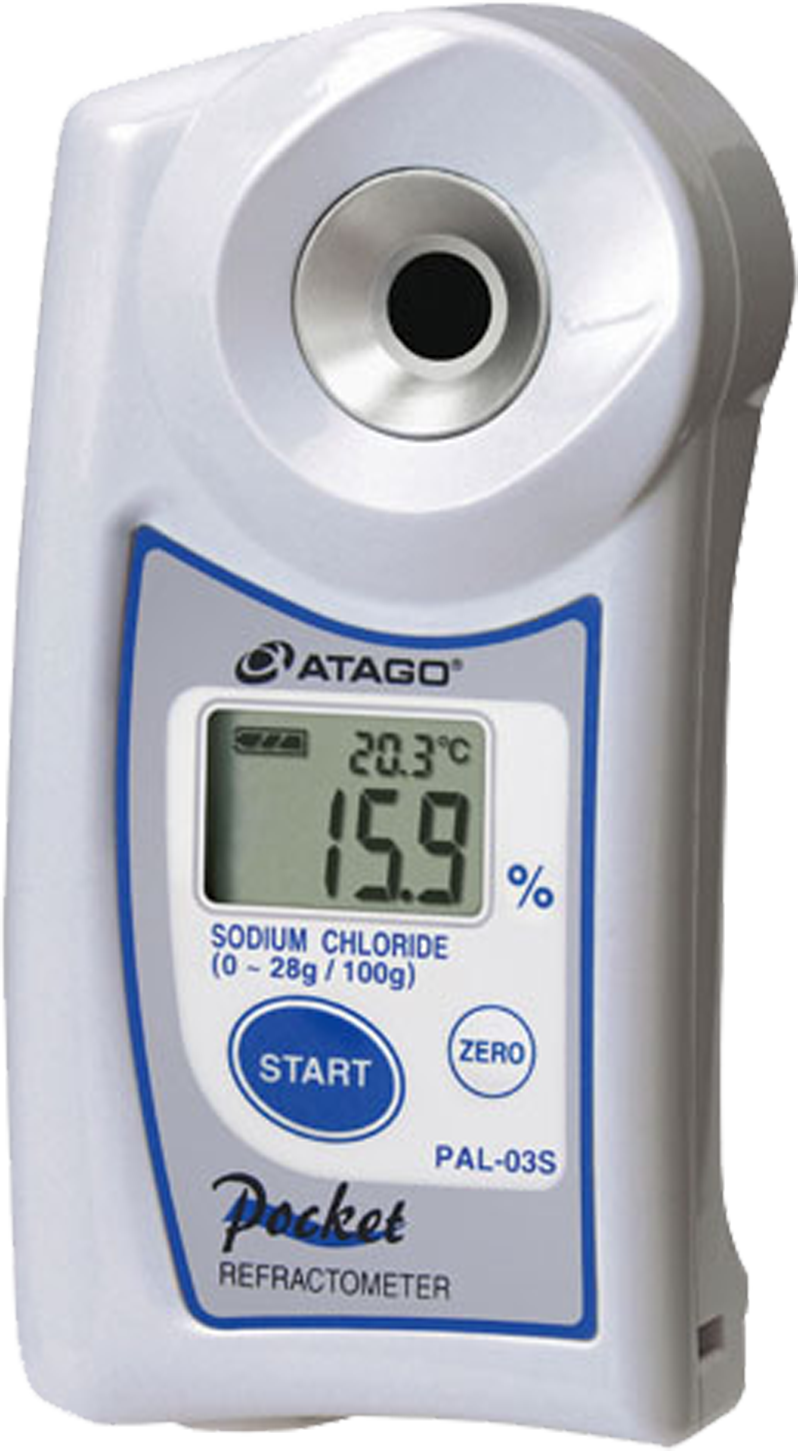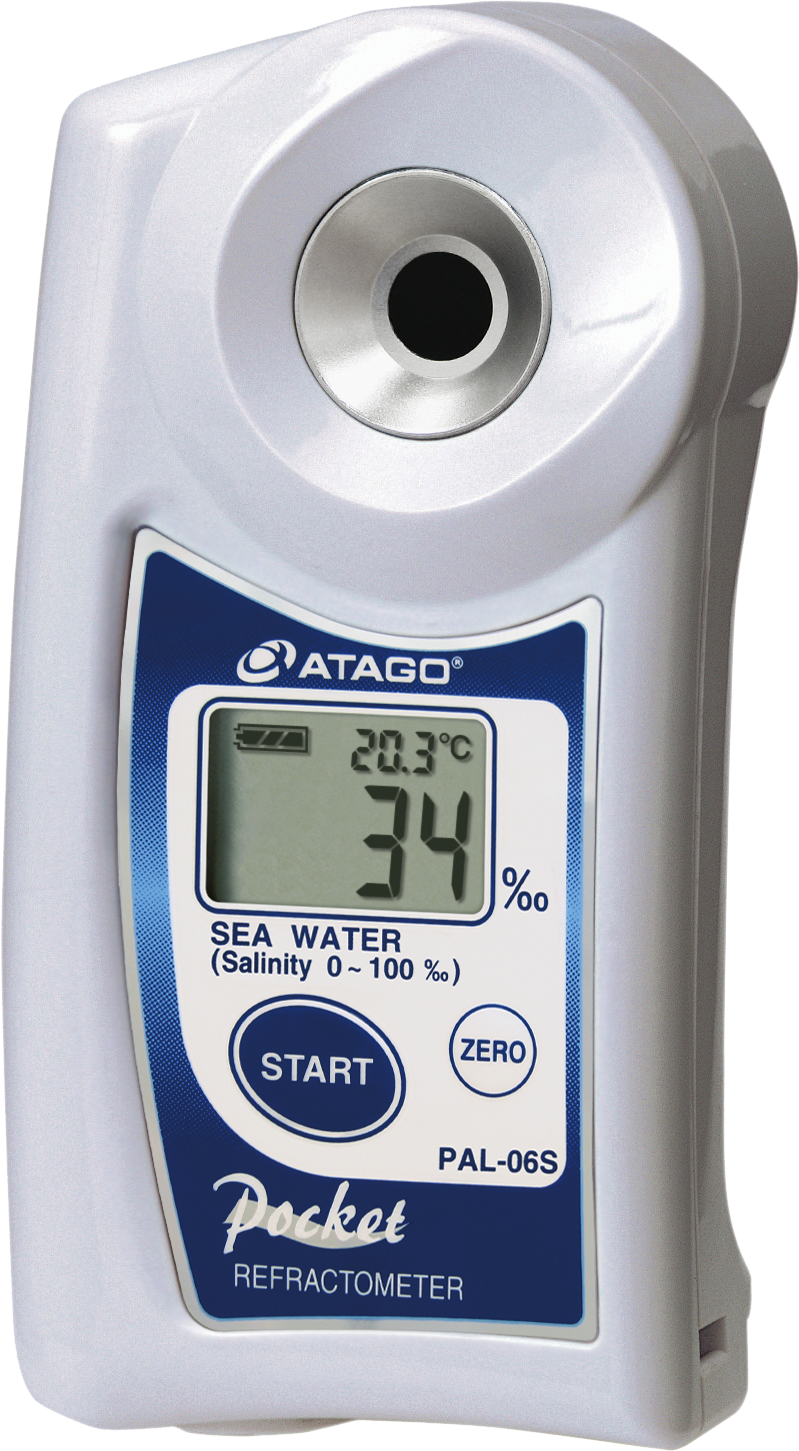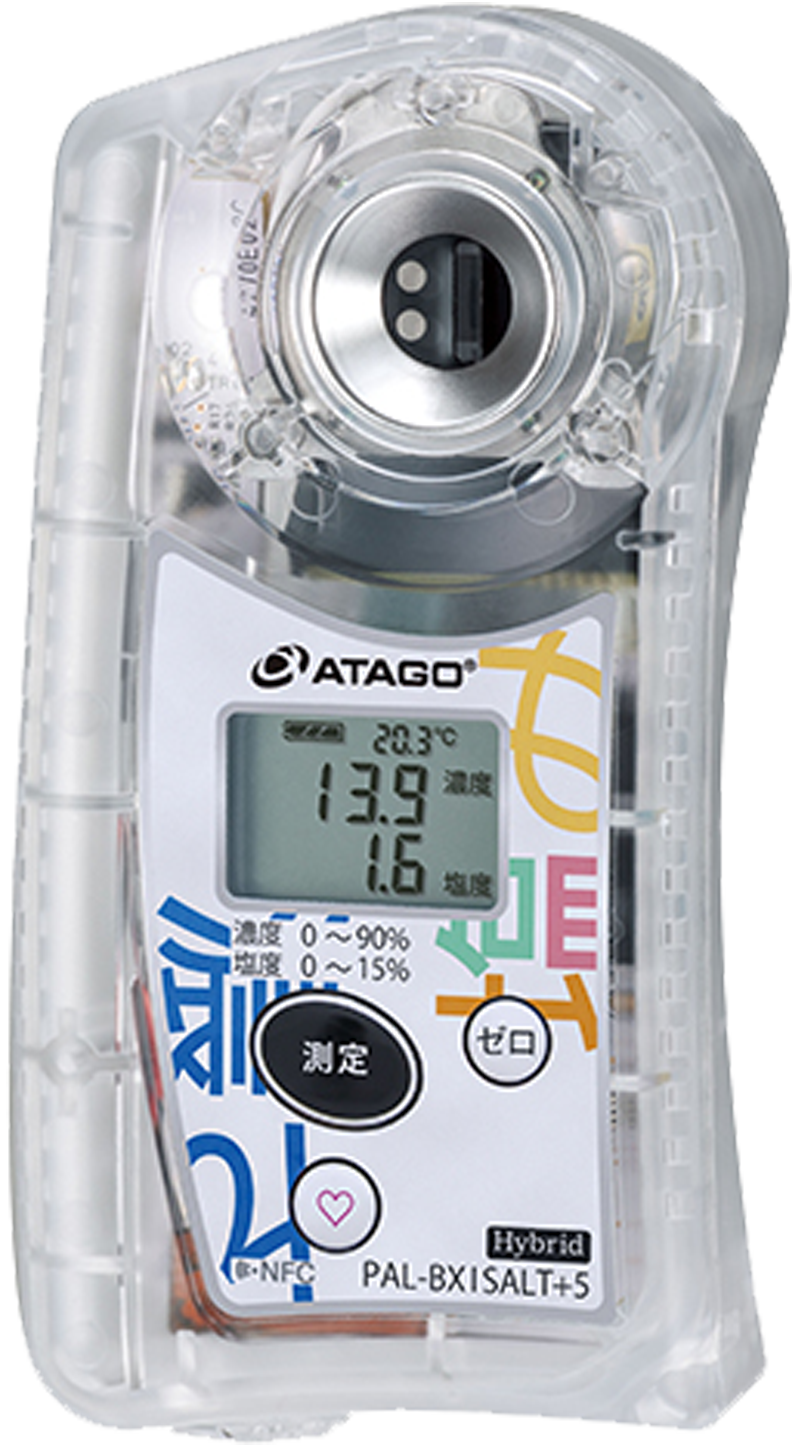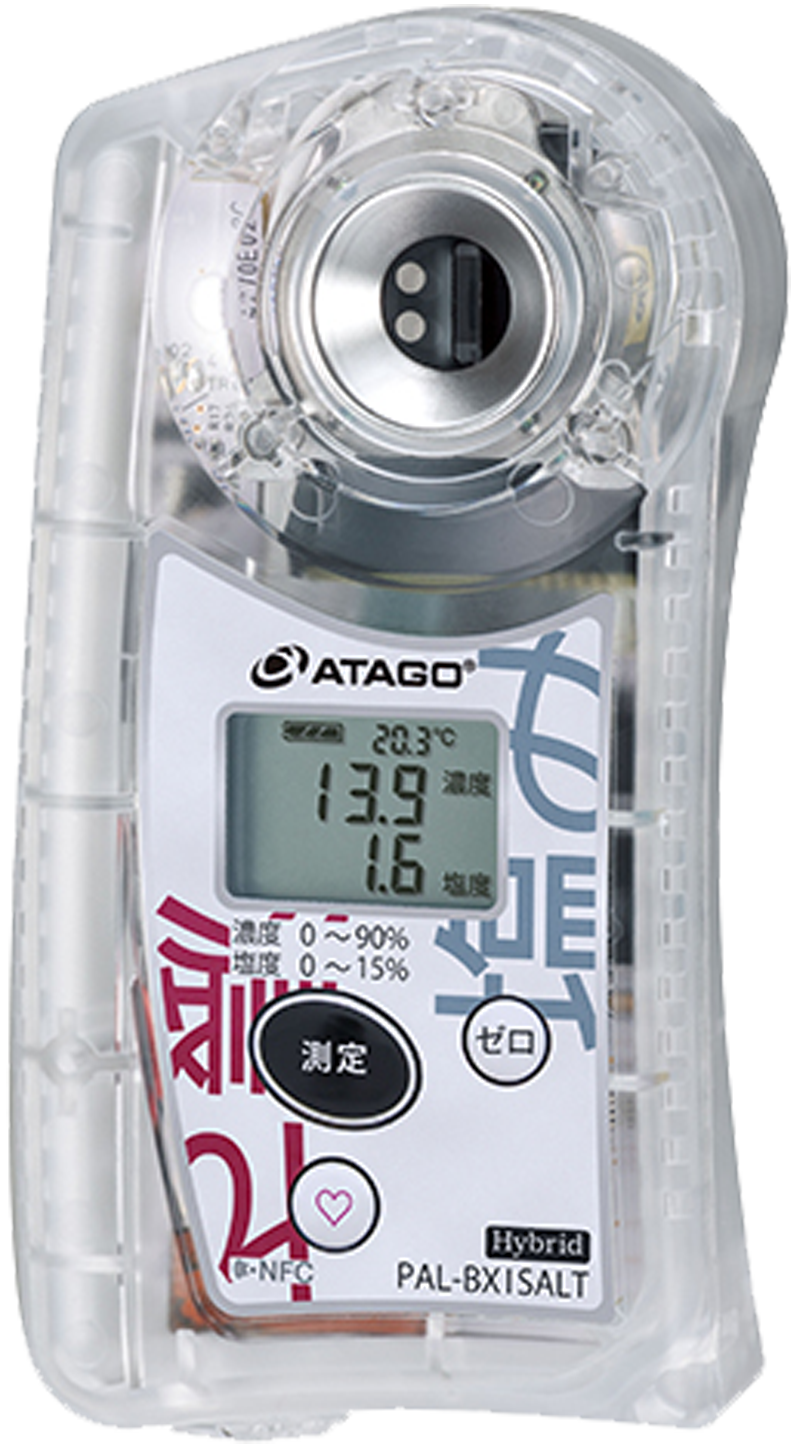Aquafarming
Onsen Tora-fugu (Tiger pufferfish) & Koi (Carp)
Fish farming is categorized into two systems: irrigation ditch and sea cage. The sea cage system uses cages submerged directly into the ocean, lakes, or ponds. The irrigation ditch system utilizes above ground irrigation systems to raise the fish. Above ground fish farming with closed loop water circulation is called a “closed recirculation aquaculture system.”

【Onsen Tora-fugu (Closed Recirculation Aquaculture System)】
Recent media coverage in Japan has increased public awareness of “Onsen Tora-fugu” (Tiger Pufferfish) that are raised in natural hot spring water. The hot spring raised pufferfish are market-ready in one year, a full six months faster than when a sea cage system is used.
Onsen Tora-fugu are raised in salt water at no less than 0.4% salt concentration. Right before shipment, they are transferred to an artificial seawater tank with salt concentration at 3.4 to 3.5% salt. Without strict control of the salt content in the natural hot spring water, Onsen Tora-fugu could turn a dark color, and eventually it can lead to death.
Aquaculture farming allows areas with no access to the ocean to raise not only pufferfish, but other saltwater creatures (like shrimp). These farms can help to revitalize the economy of nearby cities or towns.
【Koi】
When koi (carp) have topical damage or a bacterial infection, a salt water bath is recommended. Through osmosis, the salt water allows the koi to readjust and recover. Most commonly, a 0.3 to 0.7% salt bath is used for between 48 to 120 hours.
The effectiveness of salt baths is significant, especially when treating fin/tail rot, or narcolepsy. However, the wrong concentration of salt, such as a high concentration, could affect the color of the fish, and could even result in death.

The Salt Content of Aquafarming (Rough guide)
 ys
ys
